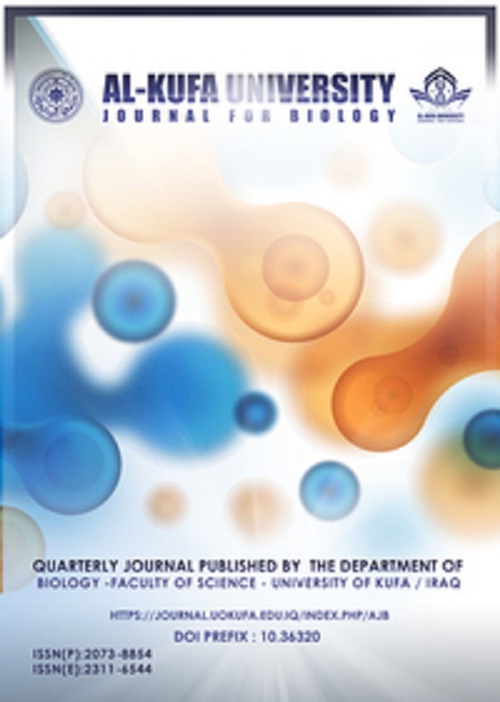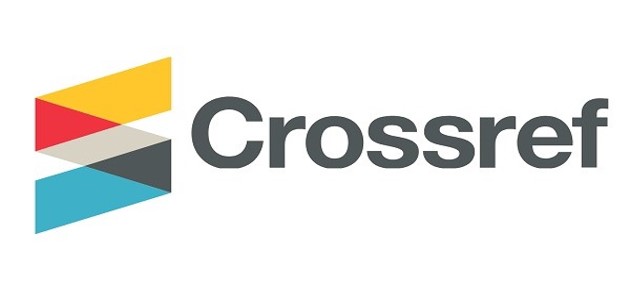A Studying of The Effect of Oxidative Stress Among Patients with Atherosclerosis in Al-Najaf City
DOI:
https://doi.org/10.36320/ajb/v15.i2.12009Keywords:
Atherosclerosis ,Total antioxidant capacity, Oxidative stress , Free radicals and Insulin resistanceAbstract
The current study sheds light on the effect of oxidative stress on the development of atherosclerosis. Thirty-eight males and twenty-two females with atherosclerosis were chosen as the patient group, whose samples were collected from the "Open-Heart Unit in Al-Sadr Teaching Hospital in Najaf City". Thirty healthy people who do not suffer from vascular disease, hypertension or diabetes, with similar ageing of patients, were selected as a control group.
Total antioxidant capacity, Insulin, cholesterol, hemoglobin and platelets were measured in atherosclerosis patients and the control group. The results show a significant increase in full antioxidant capacity, Insulin, cholesterol, haemoglobin and platelets in patients with atherosclerosis compared with the control group; the results also showed a significant increase in hemoglobin and platelet count in males with atherosclerosis compared with females. There is a positive relation between T-AOC and Insulin in atherosclerosis patients, while there is no relationship between T-AOC and both (Hb & PCV) in atherosclerosis patients.
Downloads
References
Sorescu D, Weiss D, Lassegue B et al. Superoxide production and expression of nox family proteins in human atherosclerosis. Circulation 2002; 105: 1429-35.
Mikhed Y, Daiber A, Steven S. Mitochondrial oxidative stress, mitochondrial DNA damage and their role in age-related vascular dysfunction.Int J Mol Sci. 2015; 16:15918–15953. doi: 10.3390/ijms160715918.
Stocker R, Keaney JF. Role of oxidative modifications in atherosclerosis. Physiol. Rev 2004; 84: 1381-478.
Hanna ST. Nicotine effect on cardiovascular system and ion channels. Journal of Cardiovascular Pharmacology. 2006;47(3):348–358.
Ishiro-Fukai M, Zafari AM, Fukui T, Ishizaka N, Griendling KK. p22phox is a critical component of the superoxide-generating NADH/NADPH oxidase system and regulates angiotensin II-induced hypertrophy in vascular smooth muscle cells. J Biol Chem 1996; 271: 23317-21.
Landmesser U, Drexler H. Oxidative stress, the rennin-angiotensin system, and atherosclerosis. Europ Heart J Suppl 2005: 5: A3-A7.
Pollock DM. Endothelin, angiotensin, and oxidative stress in hypertension. Hypertension 2005; 45: 477.
de Champlain J, Wu R, Girouard H, Karas M,EL Midaoui A, Laplante MA, Wu L. Oxidative stress in hypertension. Clin Exp Hypertens 2004; 26: 593-601.
Gabriele Pizzino, 1 , * Natasha Irrera, 1 Mariapaola Cucinotta, 2 Giovanni Pallio, 1 Federica Mannino, 1 Vincenzo Arcoraci, 1 Francesco Squadrito, 1 Domenica Altavilla, 2 and Alessandra Bitto 1. Oxidative Stress: Harms and Benefits for Human Health. Oxid Med Cell Longev. 2017; 2017: 8416763
Surapon Tangvarasittichai, Oxidative stress, insulin resistance, dyslipidemia and type 2 diabetes mellitus, World J Diabetes. 2015 Apr 15; 6(3): 456–480.
J.-E. Yi, H.-J. Youn.Hemorheological abnormalities and their associations with coronary blood flow in patients with cardiac syndrome X: a comparison between males and females
Perfusion, 32 (2017), pp. 57-67.
B.K. Lee, A. Durairaj, A. Mehra, et al.Hemorheological abnormalities in stable angina and acute coronary syndromes
Clin Hemorheol Microcirc, 39 (2008), pp. 43-51.
Hiroko Sugimori, Fumihiro Tomoda, Tsutomu Koike, Hiroko Kurosaki, Toshitaka Masutani, Maiko Ohara, Satoshi Kagitani & Hiroshi Inoue. Increased blood viscosity is associated with reduced renal function and elevated urinary albumin excretion in essential hypertensives without chronic kidney disease. Hypertension Research volume 36, pages247–251 (2013)
Ghiselli A, Serafini M, Natella F, Scaccini C. Total antioxidant capacity as a tool to assess redox status: critical view and experimental data. Free Radic Biol Med. 2000;29:1106–14.
Marques SS, Magalhães LM, Tóth IV, Segundo MA. Insights on antioxidant assays for biological samples based on the reduction of copper complexes-the importance of analytical conditions. Int J Mol Sci. 2014;15:11387–402.
Bartosz G. Non-enzymatic antioxidant capacity assays: Limitations of use in biomedicine. Free Radic Res. 2010;44:711–20.
Pinchuk I, Shoval H, Dotan Y, Lichtenberg D. Evaluation of antioxidants: scope, limitations and relevance of assays. Chem Phys Lipids. 2012;165:638–47.
Miller NJ, Rice-Evans C, Davies MJ, Gopinathan V, Milner A. A novel method for measuring antioxidant capacity and its application to monitoring the antioxidant status in premature neonates. Clin Sci. 1993;84:407–12.
Camila Peres Rubio, Josefa Hernández-Ruiz, Silvia Martinez-Subiela, Asta Tvarijonaviciute & José Joaquin Ceron. Spectrophotometric assays for total antioxidant capacity (TAC) in dog serum. BMC Veterinary Research volume 12, Article number: 166 (2016).
DeLisa Fairweather Sex Differences in Inflammation During Atherosclerosis, Clin Med Insights Cardiol. 2014; 8(Suppl 3): 49–59.
Auda, F. M., Saleh, A. A., & Ali, D. S. (2019). The frequency of 6 beta-thalassemia mutations in the Iraqi patients from Najaf province. Gene Reports, 17, 100516.
Ali, B. M., Moein, F., AlAndaleb, M., Hussein, Z., Abidali, M. K., & Dhyaa, S. (2021). STUDY OF SOME FACTORS AFFECTING IN MYOCARDIAL INFARCTION. Annals of the Romanian Society for Cell Biology, 25(6), 14454-14459.
Downloads
Published
How to Cite
Issue
Section
License
Copyright (c) 2023 Ban Mahdi, furqan audah

This work is licensed under a Creative Commons Attribution 4.0 International License.
which allows users to copy, create extracts, abstracts, and new works from the Article, alter and revise the Article, and make commercial use of the Article (including reuse and/or resale of the Article by commercial entities), provided the user gives appropriate credit (with a link to the formal publication through the relevant DOI), provides a link to the license, indicates if changes were made and the licensor is not represented as endorsing the use made of the work.












